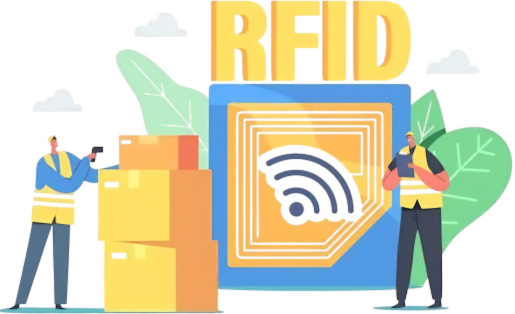Asset tracking is imperative in today’s times as assets are becoming mobile and their geographical spread has increased more than ever before. However, it is very important to choose the technology that works best to track assets. The right kind of asset management technology can give you tremendous benefits including optimisation of process workflows, increase in overall efficiency, cost reduction and accomplish your tracking objectives.
There are broadly two kinds of Asset Tracking Technologies that exist—passive and active.
Active vs. Passive Tracking Technologies
With active tracking, the tags that are used to track assets have a source of power and can store and/or transmit information to the database. On the contrary, passive tracking technology enables the tracking of assets using passive tags. Passive tags do not have a source of power and cannot transmit information on their own.
Therefore, the primary difference between the active and passive technologies can be described by the characteristics of tags and the reading hardware used as the underpinning tracking technology.
The choice of tracking technology depends upon a variety of factors. The primary factor is the tracking objective. If the tracking objective is to automate the inventory process, QR Code or passive RFID technology is good enough. If the objective is to track the real time location, GPS or RFID technology should be considered. However, if the aim is to track temperature or vibrations, one probably needs to consider sensor based tags. Other factors to be considered include:
One of such primary factors is the mobility level of the asset. If the asset is stationary in nature and will always be indoors, passive tracking is the right choice. But, what if the asset can move outdoors and needs to be tracked? In this case, you might want to consider active tracking technology.
Also, you need to take into account the frequency in which the asset updates are required. How often do we need to track the asset? Is it real time or more of periodic pings? Think about these things thoroughly before choosing the asset technology.
The cost of the asset is another important factor. You do not want to spend too much on the tracking infrastructure to track low value assets.
So, one needs to consider many factors before deciding on the tracking technology and there is a possibility of using a combination of technologies depending upon the factors mentioned above. However, which technology works best for you remains a question for a lot of businesses.
So, how do you know what’s the right asset tracking technology for your business? Let’s find out.
In this blog, we will attempt to bring light to the different characteristics of both the technologies of asset tracking platform with respect to a few important benchmarks. With a clear idea of your tracking objectives, frequency, and precision of information accuracy, you can choose the best technology. Select the one that works well with your asset tracking and management software application. Ensure it aligns better with your business goals.
1. Cost
Active technologies are more expensive than passive tracking technologies. Passive RFID in the initial days used to be expensive. However, the cost of implementing it has gradually come down. Due to tremendous research and development in the industry, the cost of passive RFID tags has fallen by 80% over the last decade. (Source – mckinsey.com) Barcodes and RFIDs are the most cost-efficient tracking technologies nowadays.
If you want a cost-effective technology for your asset management tracking software, choose passive tracking technology. It is a better choice for you.
2. Time
When it comes to time and ease of implementation, passive tracking technology takes much lesser time. This is in comparison to implementing Active tracking technology. Just a few decades back, asset tracking with the implementation of barcoding and passive RFID was also difficult and time-consuming. However, with ease of access to technology and development of a robust ecosystem, the time to implement passive technologies has reduced significantly. Hence, usage of technology has become easier.
3. Maintenance
Implementation is a one time activity but maintenance is a regular process that should be followed religiously. Hence, maintenance is a very important criteria while choosing asset tracking technology. Passive tracking technology is fairly better and easier than active tracking technology when it comes to maintenance. It is quite simple to manage passive tracking devices as they are battery-less. Barcode and passive RFID tags require little or no maintenance unlike active tracking technologies.
If one of your top tracking objectives is to keep it maintenance free, you should definitely go for passive tracking technology.
4. Stability
It is important to choose a future proof technology that goes with your growth trajectory and fits well in your technology ecosystem.
As per a latest forecast, passive tracking devices will have an immense growth during 2023-2028 period due to their existing stability state in the market.
Speaking of that, Barcode labels have been the industry standard in retail and logistics for over 30 years and RFID technology has greatly overwhelmed the use of barcodes in the past couple of decades. Organizations implement passive tracking technologies on a larger scale due to diverse use cases. They also benefit from more vendor opportunities than active tracking technology offers.
Clearly, companies widely adopt passive tracking technology as it is more stable than active technology. Passive tags also have an unlimited lifespan if they stay intact. This makes them durable and highly stable.
5. Ease of Implementation
Passive tags are operationally less expensive and easy to maintain as they do not need battery replacements. Since Passive tracking technologies do not require much infrastructure, they are easier to implement than active tracking technologies. Teams can install all the required hardware and software in a very short time compared to active technologies.
Hence, experts suggest that passive tracking technology is highly adaptable and easy to implement.
Conclusion
Considering the points above, though active technologies provide real-time information of the asset and help locate the asset with better precision, passive technologies are more appropriate for most of the asset tracking platform needs. The above features clearly show why asset management software widely accepts and prefers Passive tracking technology.
While picking the best suited technology for your asset tracking and management software application, tracking objectives provide clarity and better insights. As highlighted above, passive tracking technology has certain advantages over active tracking technology. Hence, it is proven to be beneficial for any organization seeking automation in asset tracking. While active tags have their importance for medium range requirements, passive tags prove to be worthy as they deliver good performance in a cost effective manner.
Are you looking for an efficient asset management tracking software for your business? Get in touch with our experts to know more.




